NASF agenda includes aquafeeds, innovative technologies, AI, sea lice prevention and more
-
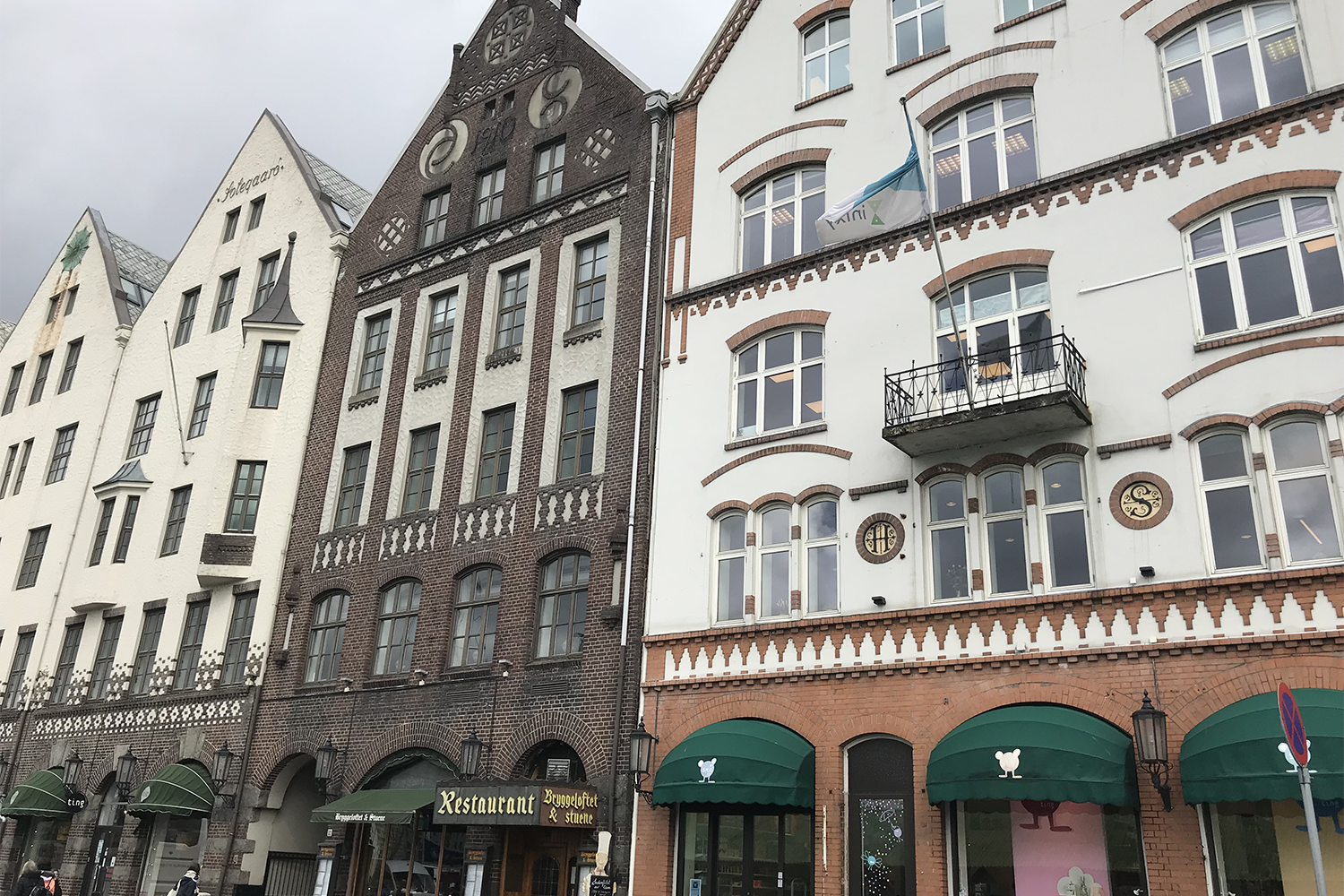
The North Atlantic Seafood Forum is held each year in Bergen, Norway. Photo by James Wright.
The North Atlantic Seafood Forum in Bergen, Norway, began on Tuesday with a wide-ranging agenda spread across three days.
Check this space throughout the event (March 5-7) for brief updates by Editor James Wright and Associate Editor Lisa Jackson and for follow-up coverage in the weeks to come.
The insect sector ‘has to deliver’
During the opening breakout session “Insects: Here to Stay” on Tuesday, explored insect-based nutrition and how this burgeoning industry plans to grow and overcome regulatory and consumer-acceptance adoption barriers.
Christophe Derrien, Secretary General for the International Platform of Insects for Food and Feed, said the IPIFF’s role is to create bridges and build trust with regulators in what is a “constant process,” he said.
Insect meals are gradually gaining approval for inclusion in aquafeeds. But Derrien warned that while the sector is optimistic about its future prospects, maintaining trust with regulators is paramount, particularly in the EU, where insect-based feed ingredients were approved only a few years ago.
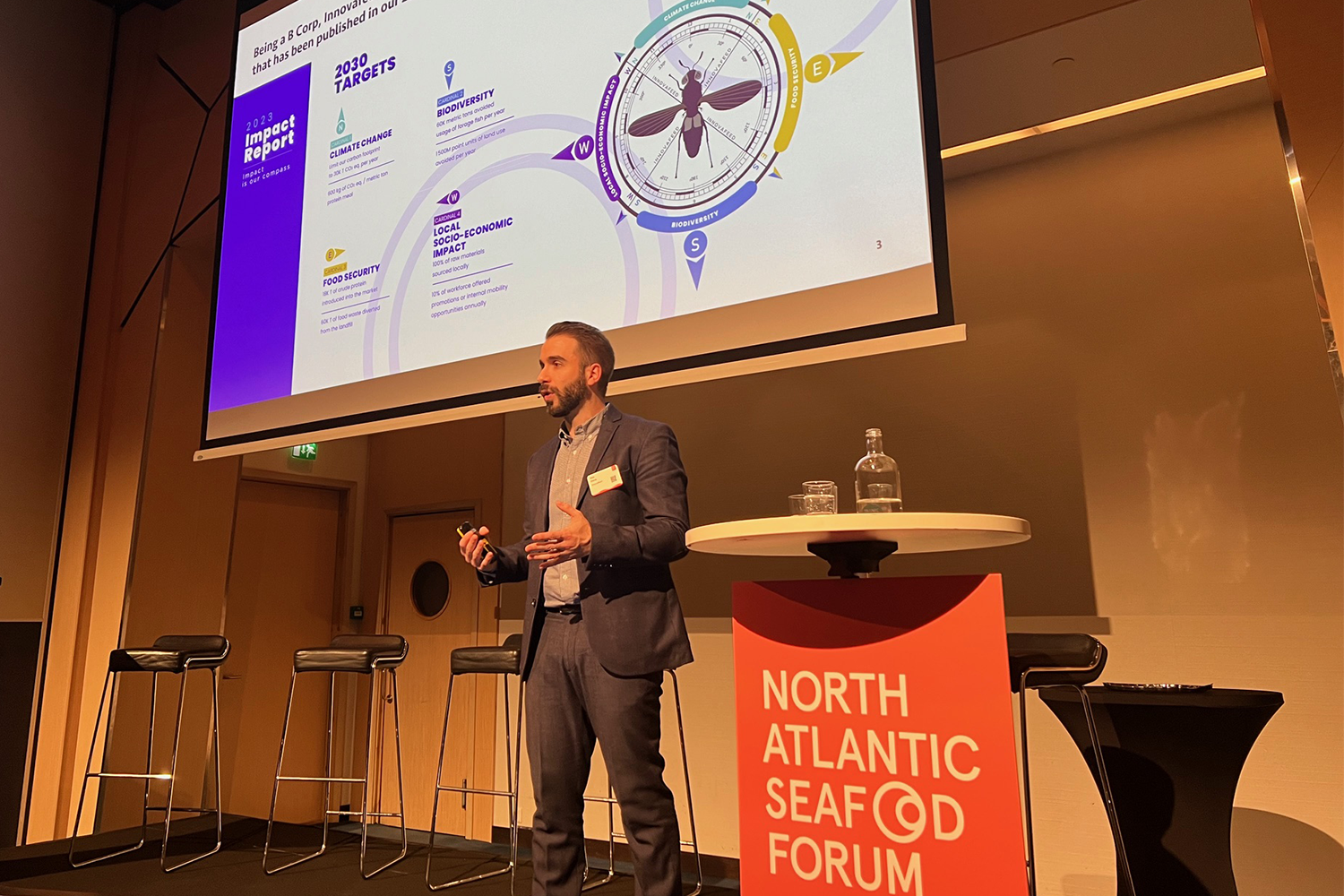
“The EU expects us to keep up with our promises,” he said. “The sector has to deliver.”
One business counting on the “insector” growing is Ocean Loop, a land-based shrimp producer in Germany, with sites in Kiel and Munich and the capacity to produce 125 metric tons annually between them. The company also produces kingfish, sea bass and sea bream.
Bert Wecker, co-CEO and CTO of the company, told NASF delegate about its high-tech operations, which include computer vision to count shrimp, measure individual weights and reduce stress among the shrimp. Ocean Loop is watching the development of insect feeds closely.
“The long-term objective is to eliminate the direct use of marine resources,” he said, adding that recent feeding trials that replaced krill meal with black solider fly larvae meal resulted in the same performance on the farm.
Michel van Spankeren, business development manager at Protix, a Netherlands-based insect producer, touted insect meal’s smaller carbon and land footprints compared to fishmeal (28 percent less carbon dioxide emissions and 86 percent less land use) as reasons to believe in the sustainability of the sector.
Audience polls conducted during the session showed that a majority of NASF delegates believed that insect meals have a strong environmental performance and are mostly compatible with other feed ingredients; that a demonstration of long-term economic viability of insect feeds will improve the outlook for insect meals; that improved feed conversion ratios and reduced mortalities on fish farms will translate into economic benefits for aquaculture; and that supportive policies and regulations – such as widening the allowed feedstock sources for the insects – will help grow the sector.
“Use of meat and fish as substrates would be key for the sector,” said Derrien of IPIFF.
Oda Høyland, commercial director at aquafeed company Biomar, said feed formulators care about nutrients for optimal fish health more than the source of the actual ingredients themselves. Høyland added that any new feed ingredients must meet nutritional requirements and food safety, reduce the carbon footprint for the supply chain and must scale production to keep costs down. To take such an ingredient to market, it must have demand, documentation, political incentives for local production and scale, and financial investments.
France-based biotech company Innovafeed unveiled its first Impact Report at the event to showcase the potential of black soldier fly larvae meal. Alex Diana, product manager at the company, said its “industrial symbiosis” production model emits 80 percent less carbon dioxide than an equivalent factory, which removes 12,000 truck journeys a year. Its new product range Hilucia includes an oil that is a “high quality source of fatty acids and energy for fish.” Innovafeed has identified more than 170 sites worldwide for potential development of insect meal factories.
“Reducing the impact of aquafeed on natural resources is a pre-competitive initiative from the French retail sector,” said Diana.
Meanwhile, microalgae producer Veramaris reported that it has improved the potency of its algal oil to 65 percent EPA and DHA and has reduced its carbon emission by nearly 38 percent.
“Higher EPA and DHA is good for fish and for humans,” he said. “Salmon shoppers care about the nutritional value of the fish. [Two-thirds] of seafood consumers say nutrition and health are the primary reasons they eat seafood.” – JW
AI and sea lice heavy topics in ‘speed sessions’
In an afternoon of “speed sessions,” six public and private research institutions and 16 aquaculture technology suppliers showcased various projects, innovations, solutions and services related to the aquaculture industry. One cross-cutting issue included finding new solutions to prevent and treat sea lice, such as PreventLice – a decision support tool for sea lice prevention planning.
“Decades of research has provided us with several tools which can effectively reduce sea lice infestations,” said Tina Oldham from the Norwegian Institute of Marine Research. “The objective of the PreventLice app is to connect users with the necessary data and information to provide an accurate and effective prevention strategies based on local conditions.”
Likewise, Kjell Maroni from the Norwegian Seafood Research Fund shared the intricacies of the Stingray system – an innovation that kills salmon lice with a laser while also monitoring the health of farmed fish 24/7. BioSort is also “looking at adding sea lice removal” into the iFarm system, while another innovation included Optilice, which acts like a “spa treatment for fish.”
“It’s a sustainable lice treatment with high focus on the environment,” said Optimar’s Hans Owen Thunem. “It offers gentle handling of the fish and can remove 98 percent of all sea lice up to 36 degrees-C (96.8 degrees-F).”
The use of artificial intelligence (AI) emerged as a hot topic, with Hanus Samró explaining the possibilities of Aquafact – a digital platform that can offer comprehensive data and business intelligence about aquaculture. Stian Rognlid, CEO of Aquaticode, discussed how their automated selection and sorting system of juvenile salmon is driven by AI. As he explained, gender sorting of salmon can substantially increase farming efficiency, with females growing faster, larger and consuming 5 percent less feed than when in a mixed population.
“We have built a machine that is capable of sorting 10,000 salmon units per hour associated with focus and accuracy,” said Rognlid. –LJ
‘The rapid growth is fantastic’
Other technologies on the table included innovative solutions for aquaculture and waste management, data-driven farming technology, aquaculture robotics and various tools to support fish growth, fish welfare and sustainability.
Two panelists focused on the “growing pains” of the salmon aquaculture industry in Iceland and the Faroe Islands – both young but burgeoning salmon sectors that face unique challenges that the speakers say could be tackled by expanding knowledge, infrastructure and technology.
“The rapid growth is fantastic and the salmon industry is fundamental to developing the Faroe Islands,” said Jóhanna Lava Køtlum, CEO of Firum. “That’s why it’s so important for us to build knowledge.” –LJ
Go low: Salmon needs to get FCR under 1
Helene Ziv-Douki, president and group leader of Cargill’s Global Aqua Nutrition Business, challenged NASF attendees to hone in on the No.1 attribute of salmon that makes it an attractive protein option for consumers: its sustainability story.
“There’s a much stronger ask about sustainability [from consumers],” said Ziv-Douki. “That’s a good thing for salmon.”
The challenge for salmon is maintaining and justifying the premium prices that the product fetches in the retail market. Salmon’s environmental profile is stronger than other proteins, but it needs to improve further if the sector wishes to stay relevant with consumers.
To that end, Ziv-Douki challenged the industry to lower its feed conversion ratio from the current level of 1.25 (kilograms of feed required to produce 1 kilogram of salmon) to 0.9, which she deemed as the “optimal” level. –JW
‘We have to act’
Therese Log Bergjord, CEO of Skretting, looked back on the past decade in the salmon feed world, as well as what’s ahead for the next decade.
“The industry has been changing over the last years and it’s gradually being reshaped,” said Log Bergjord. “Feed is one of the most important input factors to our industry, in terms of the cost elements.”
Log Bergjord reflected that, 10 years ago, the industry was heavily focused on reducing dependency on fishmeal, improving growth and reducing feed conversion ratio (FCR). Little attention was given to novel fish feed ingredients, the carbon footprint of raw materials, or to the social impact in the supply chain – which are hot topics that dominate today’s conversations.
“We do not know exactly what we will be talking about 10 years from now,” said Log Bergjord. “But we will see more governance and stricter regulation – and nitty-gritty information needs a lot of transparency. So we will have to get our act together and demonstrate the right behavior.”
Log Bergjord said the seafood industry has a “huge advantage” because the products are so healthy, making it a high-value product to feed the growing global population. But she also predicts that there will be more competition with other industries for the ingredients that the seafood industry needs.
“I’m optimistic but we have to act to make this an even more sustainable future,” said Log Bergjord. – LJ
‘It’s better to lead than be led’
Ash Amirahmadi, CEO of Sofina Foods Europa, gave a “newcomer’s perspective” on the seafood industry, exploring how the sector can provide leadership in creating sustainable food systems.
“There’s a huge gap between what foods we produce today and what the world will require,” said Amirahmadi. “The truth is, we don’t actually have that solution. Even if we knew how to solve that problem of how to feed the world, the amount of carbon on today’s products that would be created to meet that gap would be huge.”
With governments moving on new regulations and legislations to drive sustainable food production, and consumers increasingly concerned about the climate crisis, global food sectors will inevitably have to make changes and adapt. However, Amirahmadi stressed that the seafood sector should seize this as an opportunity to “become more relevant.”
“It’s better to lead than to be led,” said Amirahmadi. “If we don’t show leadership, we will absolutely continue to be led as a sector.”
Blue Lice wins the NASF Innovation Award
Norwegian aquaculture technology company Blue Lice was named the winner of the annual NASF Innovation Award for its creative solution to preventing sea lice infestations on salmon farms.
“Why are we still struggling with this problem every year?” asked Karoline Sjødal Olsen, CEO, who described the Blue Lice solution as an underwater version of mosquito traps. “We believe in targeting the lice in the water before it even attaches to the fish.”
Describing sea lice as a challenge that can “overwhelm” a salmon farmer, Blue Lice’s solution aims to prevent infestations by drawing the lice to a bright blue light, capturing and destroying them before they can attach to a fish and release millions of eggs.
On a typical Norwegian salmon farm with 2.5 million fish, up to 375 million new larvae could be released – on a weekly basis.
“That’s not just a battle – that’s a full-scale war against super smart parasites that could overwhelm any industry with its high reproductive powers,” said Sjødal.
Blue Lice, which was awarded 100,000 NOK for winning the contest, has overcome numerous obstacles since its founding in 2017, including a power outage during one of its first trials with a major salmon producer in Norway.
“We’ve learned and we turn each challenge into a chance to innovate,” Sjødal said. “And that’s the essence of innovation. Relentless perseverance and grit.” – JW
‘The new era of transparency’
With new sustainability reporting requirements coming to the EU, are seafood companies prepared for a new era of transparency? This question was explored in depth in a sustainability seminar featuring key players in the industry like PwC, PHARMAQ, Cargill, Deloitte, the Global Seafood Alliance (GSA), the Aquaculture Stewardship Council (ASC), Labeyrie and Grieg Seafood. The two-hour session discussed the impacts, risks and opportunities in the short- and long-term.
“This represents one of the major changes we’ve seen with corporate reporting for decades,” said Sara Lier Fagerbakke, manager at PwC. “And the regulation not only affects companies in Europe, but it also has global and local implications.”
“Many companies need to get better at fairly presenting both the sunny and shadow sides of its operations,” added Olav Brurås Vandvik, manager at PwC.
The Corporate Sustainability Reporting Directive (CSRD) requires clear targets and transition plans, but how do aquaculture companies go from plans on paper to real change in operations, and how do they keep track of performance? Maria Borch Helsengreen, partner at Deloitte, said that the industry will not only need to set benchmarks but also define “how we are going to achieve these targets.”
“What are the targets and who are responsible?” said Borch. “This is going to change companies because we can’t handle 1,100 new targets if we’re not incorporating them in our operations.”
David Dietz, standards manager at GSA, offered insights into how certification programs throughout the seafood supply chain can help gather information needed to fulfill new regulatory requirements regarding environmental and social accountability. As he explained, every piece of data that comes out of a third-party certification audit is independently run through an accredited certification body and goes through “layers upon layers of scrutiny.”
“The data that comes out of that can be a supportive tool for CSRD, that can create some efficiency,” said Dietz. “Third-party certification data can be trusted and it’s potentially reliable data that you can use in your CSRD journey.” – LJ
‘It’s been extremely challenging’
A series of speakers gave an update on the outlook for whitefish, including specific market insights. Jan Erik Øksenvåg, Senior Analyst at Kontali, said that the global whitefish supply is forecasted roughly 1 percent in 2024, with cod on a downward trend.
“There was an increase in the supply of whitefish from fisheries in 2023, but farmed whitefish is the driver behind the growth,” said Jan Erik Øksenvåg, Senior Analyst at Kontali. “Cost levels are still on the high level and the effects of sanctions against Russian whitefish are not yet clear.”
Finn-Arne Egeness, Chief Analyst at Nordea, predicts that cod prices will remain high, but catch income will drop.
“Russian cod is a variable impacting trade flow and regional competition, said Egeness. “Cod prices are expected to peak in 2025, driven by further quota cut and economic growth in Europe.”
Rasmus Sørensen from American Seafoods dug into market trends in Russia, the US, Europe and China for Alaska pollock, predicting that 2024 will bring similar problems as the previous year, especially with “two wars going on simultaneously.” He said the market has “never been more unpredictable.”
“Our challenges are surely not behind those yet,” said Sørensen. “We have just experienced one of the most dramatic market rate corrections in our industry in over two decades. It’s been extremely challenging for everyone.” – LJ
Now that you've reached the end of the article ...
… please consider supporting GSA’s mission to advance responsible seafood practices through education, advocacy and third-party assurances. The Advocate aims to document the evolution of responsible seafood practices and share the expansive knowledge of our vast network of contributors.
By becoming a Global Seafood Alliance member, you’re ensuring that all of the pre-competitive work we do through member benefits, resources and events can continue. Individual membership costs just $50 a year.
Not a GSA member? Join us.
Authors
-
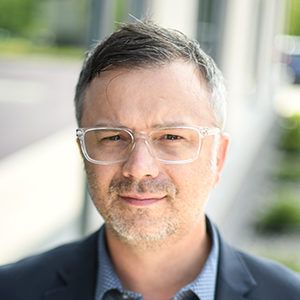
James Wright
James Wright
Editorial Manager
Global Seafood Alliance
Portsmouth, NH, USA[103,114,111,46,100,111,111,102,97,101,115,108,97,98,111,108,103,64,116,104,103,105,114,119,46,115,101,109,97,106]
-
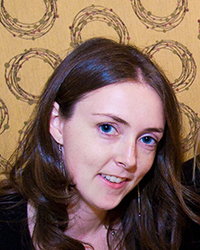
Lisa Jackson
Lisa Jackson is a writer based in Hamilton, Canada, who covers a range of food and environmental issues. Her work has been featured in Al Jazeera News, The Globe & Mail and The Toronto Star.
[103,114,111,46,100,111,111,102,97,101,115,108,97,98,111,108,103,64,110,111,115,107,99,97,106,46,97,115,105,108]
Tagged With
Related Posts
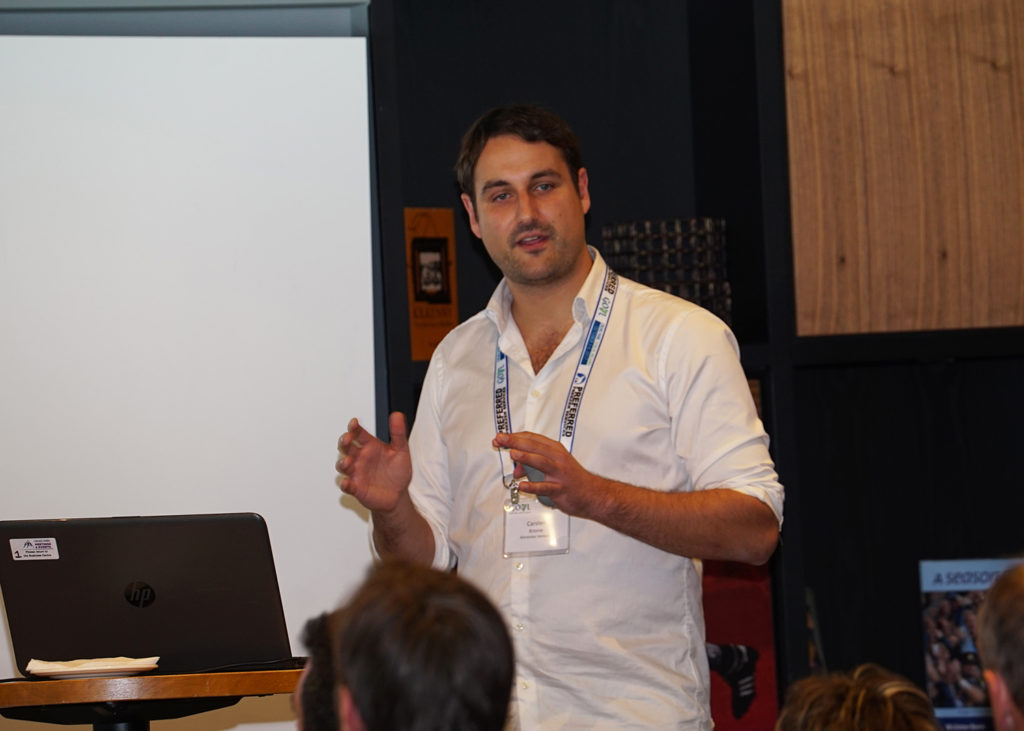
Innovation & Investment
Bergen becoming seafood startup city as accelerator Hatch sets up shop
Hatch Aquaculture Accelerator aims to support new companies, via an immersive three-month mentorship program, in the health, nutrition, technology and production sectors.
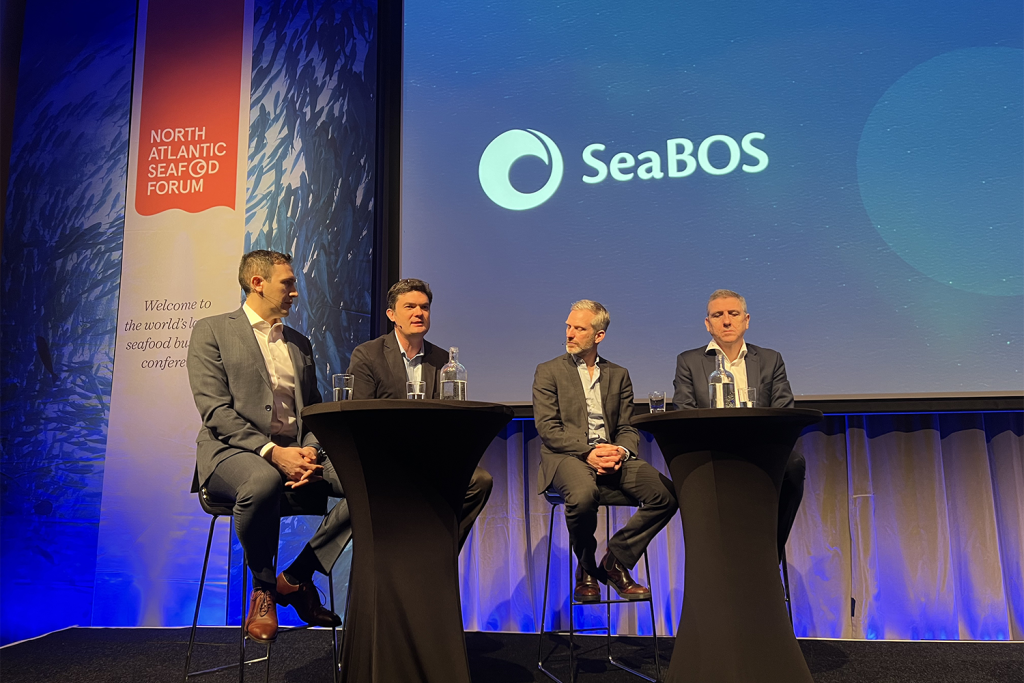
Intelligence
NASF continues with deep dives into fisheries, aquafeeds and international conflicts
Day two of the North Atlantic Seafood Forum delves into geopolitical conflicts that bleed into fishery management and sustainability initiatives.
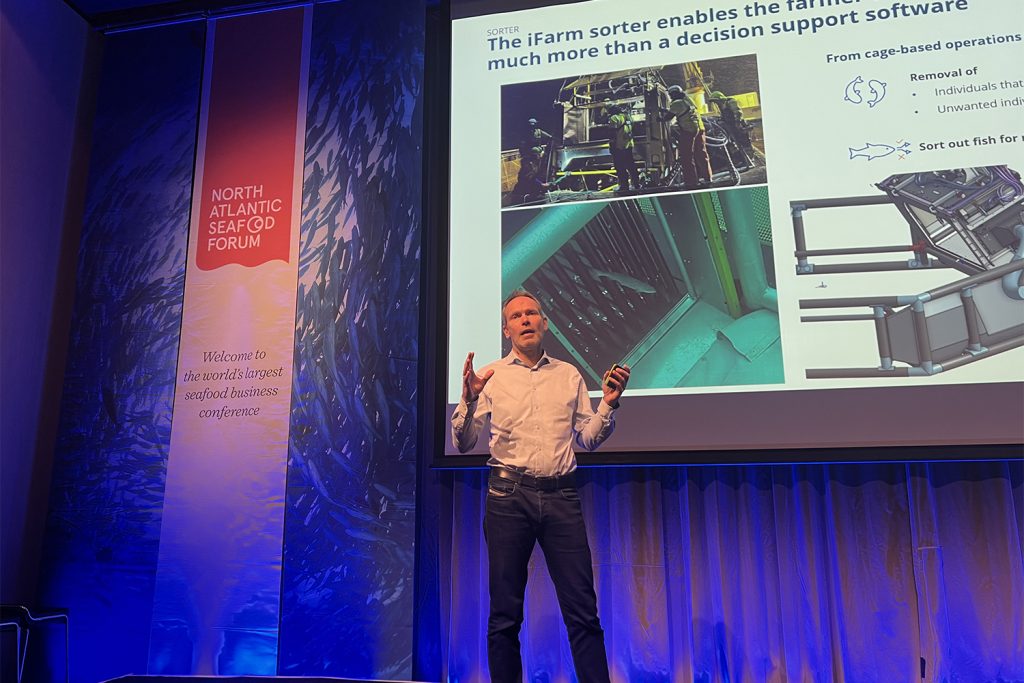
Intelligence
NASF kicks off with a focus on sea lice and aquaculture innovation
Sea lice prevention technologies are big business in Norway. Several solutions were on display at the North Atlantic Seafood Forum in Bergen.
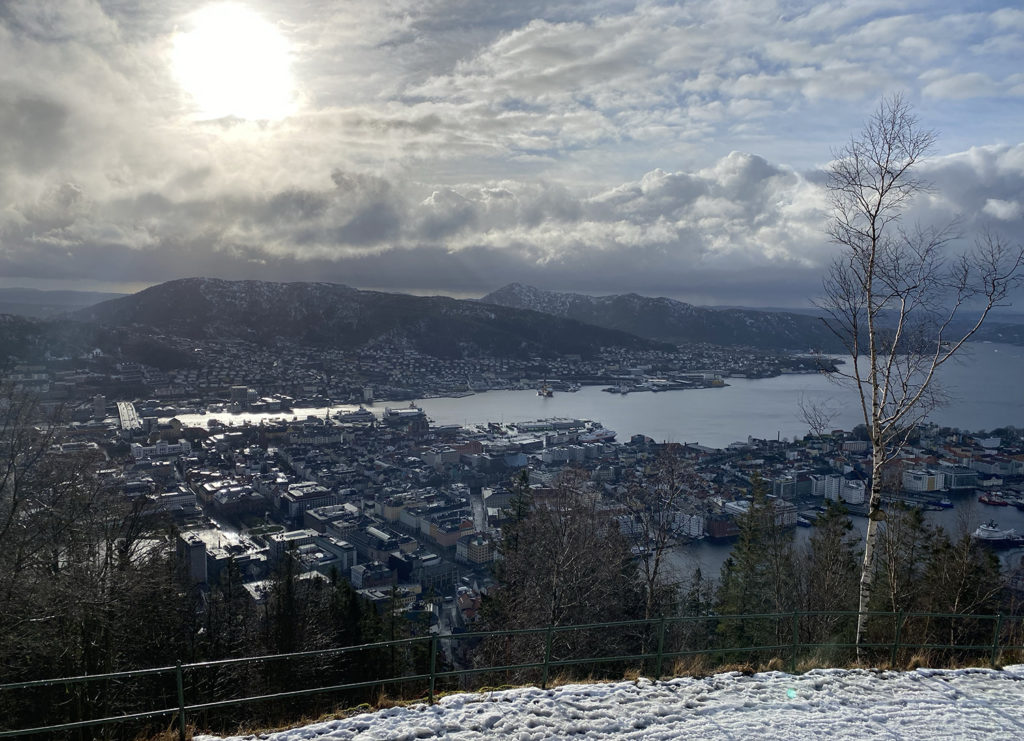
Intelligence
Notes from the 15th North Atlantic Seafood Forum
C-level seafood executives from around the world gathered at the North Atlantic Seafood Forum to discuss pressing issues facing fisheries and aquaculture.


